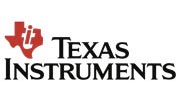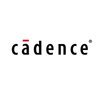Filter interviews by
Qualcomm RF Engineer Interview Questions, Process, and Tips
Qualcomm RF Engineer Interview Experiences
2 interviews found
I applied via Referral and was interviewed in Dec 2023. There were 3 interview rounds.
(1 Question)
- Q1. What is modulation, and what are the different types of modulation schemes.
- Ans.
Modulation is the process of varying a carrier signal to transmit information. Different types include AM, FM, PM, and QAM.
Modulation is used to transfer information by varying a high-frequency carrier signal.
Amplitude Modulation (AM) varies the amplitude of the carrier signal to encode information.
Frequency Modulation (FM) varies the frequency of the carrier signal to encode information.
Phase Modulation (PM) varies th...
(3 Questions)
- Q1. What is S-matrix?
- Ans.
S-matrix is a mathematical representation used in RF engineering to describe the relationship between input and output signals of a linear system.
S-matrix is also known as scattering matrix.
It is used to analyze the behavior of RF circuits and systems.
S-matrix elements represent the complex amplitudes of the incident and reflected waves at each port of a network.
S11 parameter represents the reflection coefficient at po...
- Q2. Where can you different types analog modulation schemes?
- Ans.
Different types of analog modulation schemes can be found in various communication systems.
Analog modulation schemes are used in radio broadcasting, television transmission, and wireless communication.
Some common types of analog modulation schemes include amplitude modulation (AM), frequency modulation (FM), and phase modulation (PM).
AM is used in AM radio broadcasting, where the amplitude of the carrier signal is vari...
- Q3. What is VSWR and what is the need for it?
- Ans.
VSWR stands for Voltage Standing Wave Ratio. It is a measure of how well a transmission line is matched to the impedance of the connected devices.
VSWR is a ratio of the maximum voltage to the minimum voltage along a transmission line.
It is used to measure the efficiency of power transfer and the impedance matching in RF systems.
A lower VSWR indicates better impedance matching and less power loss.
VSWR is important in RF...
(4 Questions)
- Q1. What is a standing wave in a transmission line?
- Ans.
A standing wave in a transmission line is a wave that appears to be stationary, resulting from the interference of two waves traveling in opposite directions.
A standing wave is formed when a wave traveling in one direction reflects back upon encountering an impedance mismatch in the transmission line.
The interference between the incident and reflected waves creates regions of constructive and destructive interference, ...
- Q2. Draw waveforms of Amplitude and FM/PM modulation scheme?
- Ans.
Amplitude modulation (AM) and frequency modulation (FM) waveforms can be represented graphically.
AM modulation: The amplitude of the carrier signal is varied in proportion to the amplitude of the modulating signal.
FM modulation: The frequency of the carrier signal is varied in proportion to the amplitude of the modulating signal.
Waveforms can be drawn to show the variations in amplitude or frequency over time.
AM wavefo...
- Q3. What is the propagation delay in Electromagnetic wave?
- Ans.
Propagation delay is the time it takes for an electromagnetic wave to travel from one point to another.
Propagation delay is determined by the distance between the two points and the speed of light.
It is the time it takes for the wave to propagate through a medium or free space.
Propagation delay can be calculated using the formula: delay = distance / speed of light.
For example, if the distance between two points is 100 ...
- Q4. Draw Transmitter and Receiver for a communication system.
- Ans.
A transmitter and receiver are essential components of a communication system.
Transmitter converts information into a suitable form for transmission.
Receiver receives the transmitted signal and converts it back into the original form.
Transmitter typically includes a modulator, power amplifier, and antenna.
Receiver typically includes an antenna, demodulator, and audio or video output.
Example: In a radio communication sy...
Interview Preparation Tips
- Communication Systems
- Transmission Line
- Signals and Systems
First Round was to judge engineering aptitude, i was asked general things and about my project. The interviewer was was very nice and friendly. A good experience overall.
Second round was a technical round questions from my projects and subjects like EMT and Communication systems was asked in great details. Friendly Interviewer, even though it was an interview I learnt a great deal. Again a very good experience.
Third Round was manager round. Again a technical round. Question asked from EMT and communication systems. The interviewer was not friendly at all, I felt like I was sitting in a college viva. The interviewer started every question with "Do you have any Idea about--" which I felt was berating and rude at least. While explaining things the interviewer interrupted me again and again and kept asking questions related to it which intimidated me. In the previous rounds of interview if I answered incorrectly or partially correctly the interviewer would ask me to rethink and give me sometime for the same. Here the interviewer would answer with "hmmm" again and again and move to the next question. Overall questions asked were from complete basics but I didn't have a good interview experience at all.
Reading previous interview experience for freshers, I was told I'd be asked for my preferred subject but that was not the case so an interviewee should be prepared for the worst.
(1 Question)
- Q1. Based on resume
(1 Question)
- Q1. About projects in resume
(1 Question)
- Q1. General questions on background
Interview questions from similar companies
Hardware Engineer Interview Questions & Answers
Renesas Electronics Indiaposted on 24 Dec 2024
(2 Questions)
- Q1. What is the difference between latch and flip flop
- Ans.
Latch is level triggered and stores data temporarily, while flip flop is edge triggered and stores data permanently.
Latch is level triggered, while flip flop is edge triggered
Latch stores data temporarily, while flip flop stores data permanently
Latch requires continuous input to hold the output, while flip flop retains the output until a new input is received
- Q2. Draw or gate using nand gates
- Ans.
A NAND gate can be used to create a NOR gate by connecting two NAND gates in series.
Connect the outputs of two NAND gates together
Connect the inputs of the two NAND gates to the same input signal
The output of the combined NAND gates will act as a NOR gate
Interview Preparation Tips

I was interviewed in Jun 2024.
(1 Question)
- Q1. Hardware &software
(2 Questions)
- Q1. Hardware & software engineering
- Q2. I have good need it
(2 Questions)
- Q1. All categories i have idea
- Q2. Works place idon.t no

I applied via LinkedIn and was interviewed in Jul 2024. There was 1 interview round.
(2 Questions)
- Q1. What kind FPGAs used, tell me difference
- Ans.
FPGAs are Field-Programmable Gate Arrays used in hardware design. They can be categorized as SRAM-based, Flash-based, or Antifuse-based.
SRAM-based FPGAs are volatile and require reprogramming every time they power up. Examples include Xilinx Virtex series.
Flash-based FPGAs are non-volatile and retain their configuration even when powered off. Examples include Actel ProASIC3 series.
Antifuse-based FPGAs are OTP (One-Time...
- Q2. Calculation of Decoupling analysis
- Ans.
Decoupling analysis involves calculating the required capacitance to maintain stable voltage levels in a circuit.
Decoupling analysis is essential for ensuring stable power supply in electronic circuits.
It involves calculating the amount of capacitance needed to filter out noise and maintain voltage levels.
Decoupling capacitors are placed strategically in a circuit to provide this filtering effect.
The formula for calcul...
Interview Preparation Tips
Skills evaluated in this interview

I applied via campus placement at Netaji Subhas Institute of Technology (NSIT) and was interviewed in Jun 2024. There were 2 interview rounds.
Basic ece ques and apti
(2 Questions)
- Q1. What are flip flops and latches
- Ans.
Flip flops and latches are sequential logic circuits used in digital electronics to store and transfer data.
Flip flops are clocked circuits that store one bit of data, while latches are level-sensitive circuits that store data as long as the enable signal is active.
Flip flops are edge-triggered, meaning they change state on a clock edge, while latches are level-triggered, changing state as long as the enable signal is ...
- Q2. Verilog projects
Interview Preparation Tips

I applied via Company Website and was interviewed in Feb 2024. There was 1 interview round.
(2 Questions)
- Q1. How do you rate yourself for C# languange
- Q2. How would you troubleshoot your application after deploying
- Ans.
I would start by checking the application logs, verifying configurations, and testing different scenarios.
Check application logs for any errors or warnings
Verify configurations to ensure they are correct
Test different scenarios to replicate the issue
Use monitoring tools to track performance metrics
Collaborate with team members to troubleshoot and find solutions
Interview Preparation Tips
Skills evaluated in this interview

Was asked details of scanning electron microscopy
Interview Preparation Tips

Aptitude, Digital Electronics.

Questions on dgital electronics and circuits
(1 Question)
- Q1. Questions on digital electronics , STA and FSM and Verilog
Qualcomm Interview FAQs
Tell us how to improve this page.
Qualcomm Interviews By Designations
- Qualcomm Software Engineer Interview Questions
- Qualcomm Associate Engineer Interview Questions
- Qualcomm Engineer Interview Questions
- Qualcomm Senior Engineer Interview Questions
- Qualcomm Hardware Engineer Interview Questions
- Qualcomm Software Developer Interview Questions
- Qualcomm Intern Interview Questions
- Qualcomm Senior Software Engineer Interview Questions
- Show more
Interview Questions for Popular Designations
- Desktop Support Engineer Interview Questions
- IT Engineer Interview Questions
- Hardware Engineer Interview Questions
- RF Optimization Engineer Interview Questions
- NOC Engineer Interview Questions
- Engineer- Customer Support Interview Questions
- Information Technology Support Engineer Interview Questions
- Service Desk Engineer Interview Questions
- Show more
People are getting interviews through
Interview Questions from Similar Companies
Fast track your campus placements
Qualcomm RF Engineer Reviews and Ratings
based on 3 reviews
Rating in categories
|
Senior Engineer
1.2k
salaries
| ₹15.1 L/yr - ₹50 L/yr |
|
Software Engineer
965
salaries
| ₹11.6 L/yr - ₹36 L/yr |
|
Engineer
868
salaries
| ₹11 L/yr - ₹34 L/yr |
|
Senior Software Engineer
560
salaries
| ₹16 L/yr - ₹50 L/yr |
|
Senior Leader Engineer
396
salaries
| ₹20 L/yr - ₹72 L/yr |

Nvidia

Intel

Mercedes-Benz Research and Development India

Broadcom
Calculate your in-hand salary
- Home >
- Interviews >
- Qualcomm Interview Questions >
- Qualcomm RF Engineer Interview Questions













